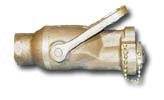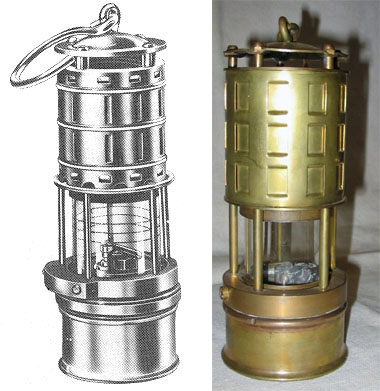|
Battle telephone circuits. Battle telephone circuits
are sound-powered circuits. Vibrations of the voice
actuate a diaphragm and cause an armature to move in a
field of permanent magnets, thus generating electrical
current. This current is conducted by wiring through the
receiver, where it causes the receiver diaphragm to
vibrate. Vibrations of the transmitter diaphragm are in
frequency with vibrations of the receiver diaphragm;
hence, sounds produced at the transmitter are reproduced
at the receiver. Since no outside source of electrical
power is involved, these phones may continue to function
after all power systems of the ship have been knocked
out. Outlets for sound-powered telephones are located in
numerous stations aboard ship. The wiring
interconnecting these outlets (in various combinations)
constitutes the sound-powered battle telephone system.
The normal damage control sound-powered circuits of a
large ship are as follows:
Circuit Name Function
|
- 2JZ Damage and stability control Provides
communication between the damage control officer and
all repair control parties; also personnel stationed
in pump rooms, at draft gauges, at Diesel fire
pumps, and, in carriers only, primary and auxiliary
flight-control stations, hangar control and
conflagration stations.
- 3JZ Upper deck repair Provides communication
between the officer at Repair I and each Repair I
patrol party, each battle dressing station in the
superstructure, and, in carriers, each hangar-deck
patrol party and Repair VII.
- 4JZ Forward repair Provides communication
between the officer at Repair II and each Repair II
patrol party, each forward battle dressing station,
and each remote valve control station forward of
engineering spaces.
- 5JZ After repair Provides communication between
the officer at Repair III and each Repair III patrol
party, each battle dressing station aft, and each
remote valve control station aft of engineering
spaces.
- 6JZ Amidship repair Provides communication
between the officer at Repair IV and each Repair IV
patrol party, each amidship battle dressing station,
and each remote valve control station amidships.
- 7JZ Engineer's repair Provides communication
between the officer at Repair V and each remote
valve operating station (steam and fuel oil), each
engine room, each fireroom, each auxiliary engine
room, and each amidship battle dressing station.
- 8JZ Flight deck repair Provides communication
between the officer at Repair VIII and each flight
deck patrol party, and each topside battle dressing
station. 201 Circuit Name Function
- 9JZ Magazine sprinkling and ordnance repair
Provides communication between the officer at Repair
VI forward, Repair VI aft, sprinkling control
forward, sprinkling control aft, each 5-inch powder
handling room, each turret powder handling room, and
damage-control station.
- 3JG Aircraft service These circuits are found on
carriers only and are primarily for use by the air
group for gassing planes, bomb and torpedo handling,
and like services. In the event of a casualty they
are to be used for disposing of gasoline, bombs and
torpedoes to prevent further damage to the ship.
- 5JG Conflagration control
- 7JG Aviation ordnance
- 1JA Captains battle circuit Provides
communication between the Captain and the heads of
departments at their battle stations, including the
damage control officer.
- 11JV Maneuvering, docking, and catapult control
This circuit is provided for communication between
the stations concerned with ship handling and
aircraft, but may well be used by repair parties in
the event of emergency.
- 12JV Engineer's (main engines) These circuits
are provided for communication between all stations
concerned with propulsion and auxiliary power
plants, and are used by engineering damage-control
party.
- 3JV Engineer's (boilers) 4JV Engineer's (fuel
and stability)
- 5JV Engineer's (electrical) 1JL Lookouts
(surface and sky) This circuit is primarily for
conveying information from the lookouts to the
officer of the deck, Captain, gunnery officer, and
combat information center. Due to the locations of
these stations they may be used to locate damage due
to high-angle gunfire and bombs.
|




.jpg)